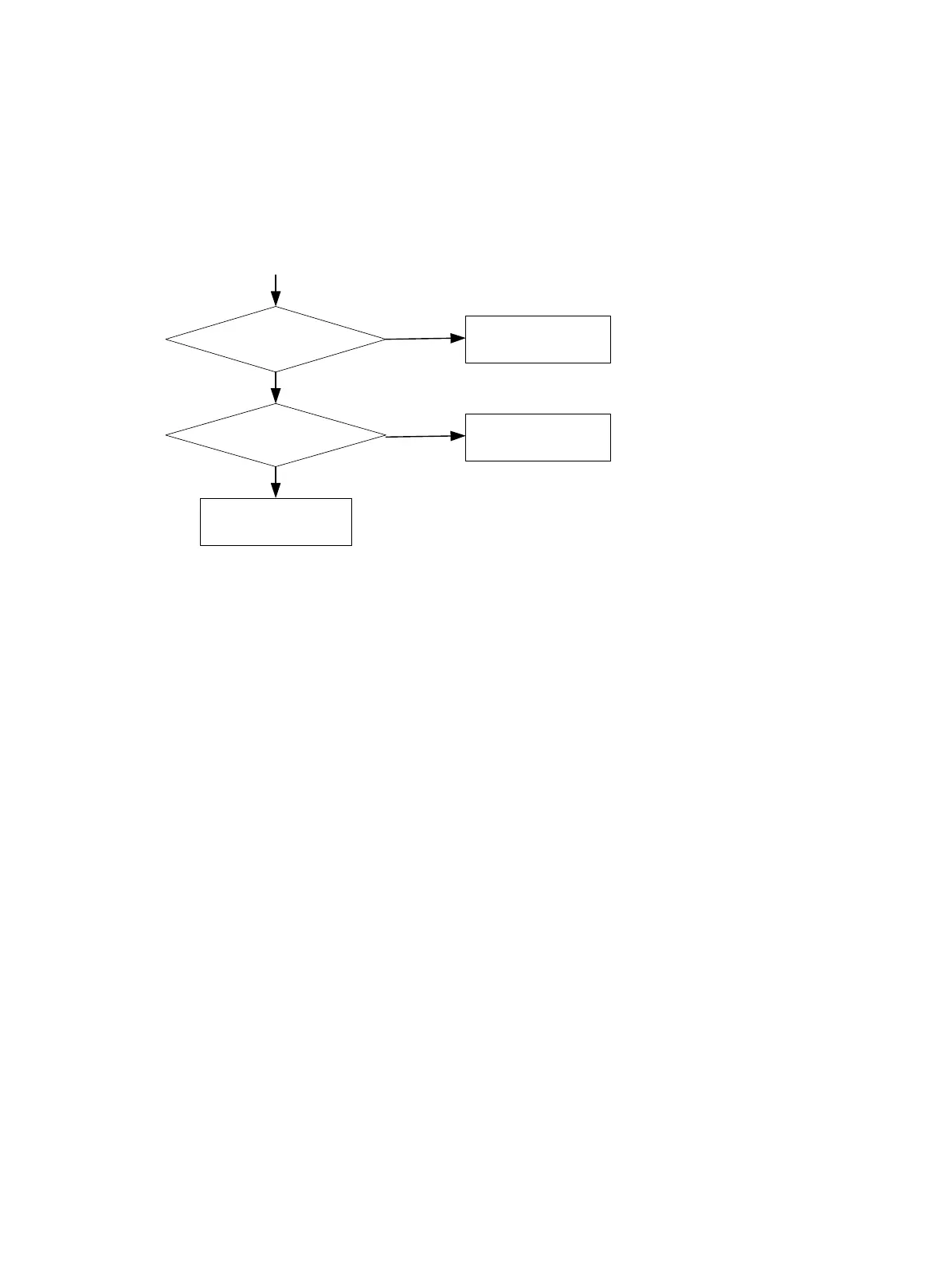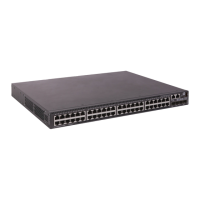133
2. Searches for a Layer 2 Ethernet interfaces in up state. If one or more interfaces are found, the
device uses the VLAN interface of the default VLAN for automatic configuration and quits the
process.
3. Searches for all Layer 3 Ethernet interfaces in up state. If one or more interfaces are found, the
device sorts them in the dictionary order of the interface types and then in ascending order of
interface numbers. The device uses the first interface for automatic configuration.
Figure 43 Interface selection process
Automatic-configuration parameter acquisition process
After the device finds an interface for automatic configuration, it enables the DHCP client on the interface.
Then, the DHCP client broadcasts a DHCP request to locate a DHCP server and request configuration
settings. The DHCP request uses DHCP Option 55 to indicate the configuration settings that the device
requires, including the following items:
• The configuration file name or URL.
• The TFTP server domain name.
• The TFTP server IP address
• The DNS server IP address.
After receiving a DHCP reply, the device resolves the packet for the assigned IP address. If the reply
provides an IP address, the device continues to examine the following options or fields in the DHCP reply:
• Option 67 or the file field—Carries the configuration file name or URL. The device resolves Option
67 first. If Option 67 does not contain the configuration file name or URL, the device resolves the file
field. The configuration file name might indicate a file on an HTTP server or a TFTP server.
• Option 150—Carries the TFTP server IP address. If this option contains a valid TFTP server IP
address, the device starts the configuration file acquisition process. Otherwise, the device resolves
Option 66.
• Option 66—Carries the TFTP server domain name. If Option 150 does not contain a TFTP server IP
address, the device resolves this option for a TFTP server domain name and tries to communicate
with the DNS server indicated by Option 6 to get the TFTP server IP address.
• Option 6—Carries the DNS server IP address.
For more information about DHCP, see Layer 3—IP Services Configuration Guide.
Management Ethernet interface
up at Layer 2?
Layer 2 Ethernet interface
in up state?
N
N
Use the management
Ethernet interface
Use the VLAN interface of
the default VLAN
Select one Layer 3 Ethernet
interface in up state
Y
Y

